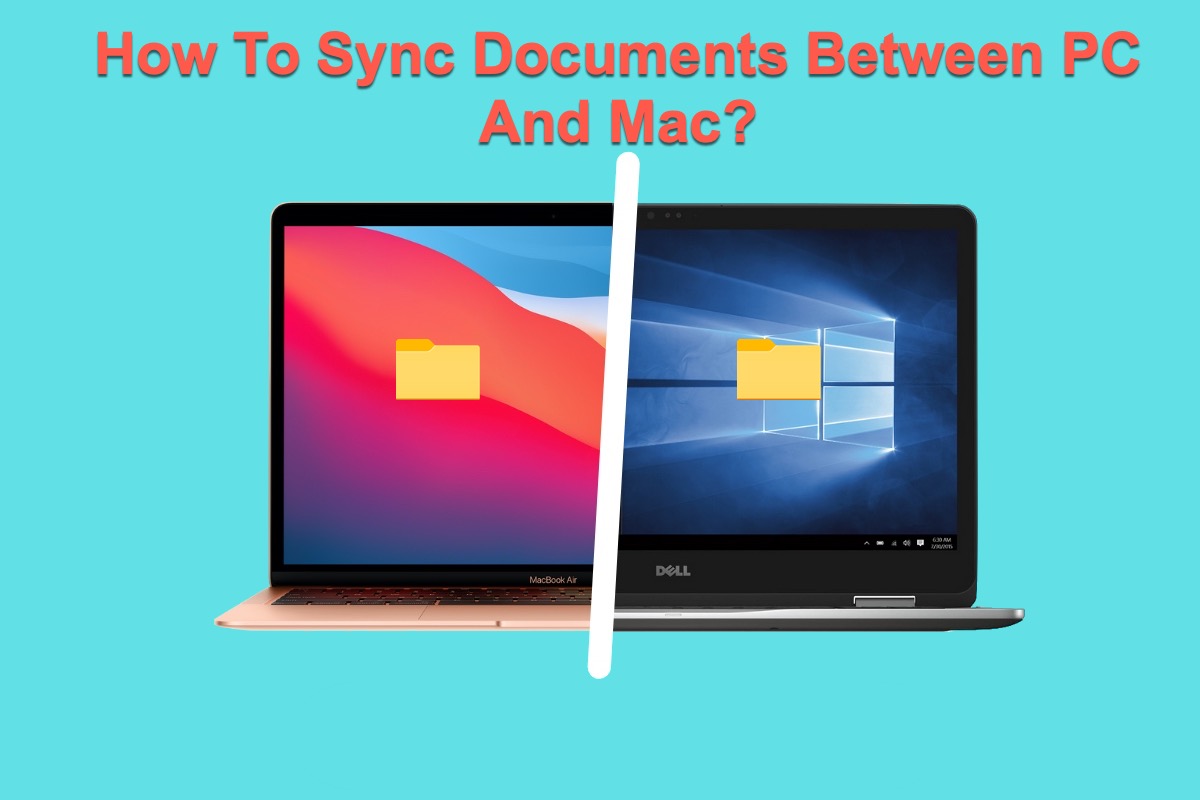If you need to dual-boot two operating system versions (Windows OS and macOS) on one device, knowledge of how to sync documents between a PC and a Mac is a necessity. But how can that work be accomplished?
Feel no worry, this article from iBoysoft walks you through 5 effective methods of syncing files between PC and Mac.

How to sync files between PC and Mac?
For people who work on macOS and Windows OS at the same time, file synching matters which saves lots of time and improves efficiency to a great extent. Read on to gain multiple solutions to complete the file syncing.
Method 1: Use an external hard drive
An external hard drive formatted as a macOS-compatible and Windows-compatible file system is a nice medium to share files between Mac and PC as if you take it as your backup drive.
Just connect it to your device and enable it to back up your computer through Time Machine on Mac and File History on Windows, or, simply save documents/files to it, then you can access the files on your computer whether you're running macOS or Windows OS.
Method 2: Enable iCloud Drive
iCloud Drive is a wonderful application that syncs all your files and documents saved on your device seamlessly, which is available for Mac users and Windows users.
You can download it both on the macOS and Windows OS and enable it to sync the data stored on your device so that you have access to the files and documents no matter what operating system you're running if you log into the same iCloud account.
Here is how to use iCloud on Mac:
- Click the Apple Menu from the top left corner of your screen, then choose System Preferences.
- Select Apple ID, find iCloud in the left column, and click it.
- Enter your Apple ID and password, then turn on the iCloud features you want to use.
You're allowed to view files and folders synced on Windows with the same iCloud account when you're running macOS.
Since you have enabled iCloud for two operating systems with one account, it's normal that you receive the message that iCloud storage is full. In such instances, you should either upgrade your iCloud storage subscription or clean up junk files in iCloud.
Now let's concentrate on how to use iCloud for Windows by following the given steps below:
- Go to the Microsoft Store in Windows and search for iCloud.
- Install the iCloud software on the Windows PC.
- Start iCloud and sign in with your Apple ID.
- Tick the iCloud Drive checkbox.
- Wait a while and then open iCloud in Windows Explorer.
Files and folders in iCloud on Mac will appear on your PC and can be accessed in File Explorer. You can download it or keep it online as you like. For the files or folders being modified, you have access to them on your Mac if you allow iCloud utility to sync.
Method 3: Utilize Google Drive
Google Drive is a part of Google Workspace and a safe place to back up and access all your files from any device. Launched in 2012, Google Drive allows users to store files in the cloud, sync files across devices, and share files. In addition to the web interface, Google Drive even offers apps for Windows and macOS computers.
You have 15GB of space for free in your Google Drive account. Go to drive.google.com which lists the files/folders that you upload or sync and Google Docs, Sheets Slides, and Forms that you create.
Method 4: Launch OneDrive
OneDrive is a file hosting service built by Microsoft in 2007, which aims to provide users with a platform to share and sync files. It offers 5GB of storage space free of charge, with 100 GB, 1 TB, and 6 TB storage options available either separately or with Microsoft 365 subscriptions.
OneDrive offers support for Windows OS and macOS so that you can run it on both operating systems for the file syncing task. Just save a file that you create or modify to OneDrive, then you can access it on another operating system with the same account.
Method 5: Run Syncthing
Syncthing is a free and open-source tool for continuous file syncing. It synchronized files in real time between two or more computers, keeping them safe from prying eyes. You have access to where your data is stored, whether it is shared with third parties, and how it is transmitted over the internet.
Synchthing does not rely on a web server to host the files, no need for an account. Users can sync individual folders where they are on computers, smartphones, or hard drives.
Wrapping up
Have only one device but need to sync files between two operating systems? You're in the right place. This post gives you 5 effective ways to complete the file syncing work. You can try one or more as you wish to access the files stored on another unactivated OS with ease.
Find this article useful and informative? Share it with more people now!
FAQ about how to sync documents between PC and Mac
- Q How can I sync files between Mac and PC?
-
A
You can sync files between Mac and PC via an external hard drive, iCloud Drive, Google Drive, OneDrive, and Syncthing.
- QHow to share files between PC and Mac via external hard drive?
-
A
Connect the drive to the system and then navigate the folders to copy the files into the hard drive. Remove the hard drive and connect it with macOS to get those copied files into this system.